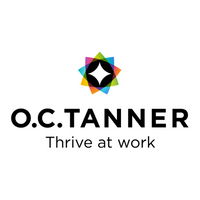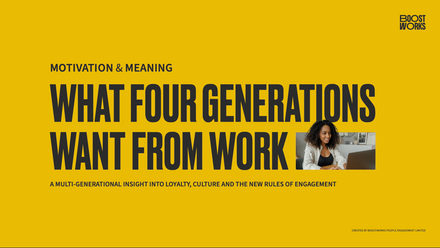Why a pat on the back can be the best way to keep staff engaged
Recognition helps create a great workplace culture. Praising effort and recognising people for their great work leads to higher engagement, innovation, and increased revenue. But recognition can help with other HR challenges, too, especially talent retention.
Staff turnover is one of the most expensive challenges a company faces. And it’s not just the cost of turnover itself, but also the loss of talent, skills and institutional knowledge. And there is the disruption in work and break in team connection. Simply put, it pays to keep your employees and one of the best ways to do this is to make them feel appreciated.
While 80% of employers believe employees quit for higher pay, only 12% of leavers actually do. O.C. Tanner research reveals that 79% of people who quit their jobs cite “lack of appreciation” as their reason for leaving. No one wants to stay at a job where they aren’t seen, valued, or appreciated for their hard work and contributions.
Why people are quitting
After more than two years of Covid-19 pandemic adjustments, people are re-evaluating their life priorities and the role work plays – a big reason why we’re now seeing The Great Resignation. In fact, 36% of employees who quit in the past six months did so without having another job to go to and 40% of employees plan to leave their current jobs in 3-6 months’ time.
The truth is that many employees aren’t leaving their jobs for a similar job with more pay and benefits or better brand name. They are leaving for completely different careers that give them more control and flexibility over their lives.
How can recognition help?
Firstly, recognition helps remote employees stay connected, which is key. Employees who have strong connections at work have better experiences, do more great work and are less likely to suffer burnout.
It takes more than Zoom or Microsoft Teams calls to keep people connected. The best workplaces use frequent employee recognition, including peer-to-peer recognition, to connect employees to purpose, accomplishment and one another, with recognition connecting employees to purpose by affirming how their great work contributes to and furthers the organisation’s mission.
No matter where employees are working from, even if they aren’t physically together, recognition can bridge the distance gaps and help them feel they are part of the team.
When recognition is an integrated part of an organisation’s culture, employees are:
• Four times more likely to feel high inclusion
• 22 % less likely to feel high exclusion
• 13 times more likely to feel they belong at the organisation.
And when companies celebrate successes together, employees are 20 times more likely to feel connected and want to stay.
Recognition also reinforces ownership of work and builds autonomy, but this is only possible by giving employees the trust and power to give peer-to-peer recognition whenever they see great work.
Employees must be empowered to own the recognition experience without unnecessary approvals and encouraged to personalise each recognition moment for the recipient. By integrating recognition into the company culture, employees can easily recognise and be recognised for their work.
An example of recognition working well is at GE Appliances which uses ‘Recognise YOU’ (powered by O.C. Tanner’s Culture Cloud) to personalise employees’ career anniversary events but also empower managers to recognise when they see great work without the need for HR involvement.
By removing unnecessary approvals for recognition, this allows leaders to create whatever personalised recognition they want for their people.
This empowerment and autonomy have had an unbelievable impact on employee retention:
• Likelihood of attrition fell 73% when employees received at least one eCard a month
• Likelihood of attrition decreased 79% when employees received at least one nomination a month
• Overall risk of attrition decreased 58% with any type of recognition in the prior month.
Retention needs recognition
Research proves that a key reason employees walk away from a job is not feeling appreciated. And so HR leaders must look at integrating recognition into everyday culture if employees are to feel a valued part of the organisation and connected to its purpose, their accomplishments and each other. Failure to invest in recognition will mean weak ties between employees and the company and retaining talent will remain an uphill struggle.
Supplied by REBA Associate Member, O. C. Tanner
The worldwide leader in employee recognition solutions that help people thrive at work.








